 Here is the transcript of the notorious growth-lobby video “Straightening out B.A.N.A.N.A.S” with Bernard Salt, Rob Lang (CEO Parramatta City Council) and Guy Gibson, which we wrote about at "Salty follies and the Naked Property and Growth Lobby."Here the participants, notably KPMG partner and Murdoch journalist, Bernard Salt, discuss how to influence public opinion by posing as the 'public' in a variety of informal forums. Ironically, these wrinkled old men show disrespect for Australian citizens who object to their bulldozer development tactics, generalising them as old has-beens - Gibson describes them as "wrinklies" - and suggesting that they have nothing better to do than to participate in democracy - only they don't acknowledge that it is democracy - they call it 'populism'. More and more, growth lobby queens sound like the Mary Antoinettes of Australian society.
Here is the transcript of the notorious growth-lobby video “Straightening out B.A.N.A.N.A.S” with Bernard Salt, Rob Lang (CEO Parramatta City Council) and Guy Gibson, which we wrote about at "Salty follies and the Naked Property and Growth Lobby."Here the participants, notably KPMG partner and Murdoch journalist, Bernard Salt, discuss how to influence public opinion by posing as the 'public' in a variety of informal forums. Ironically, these wrinkled old men show disrespect for Australian citizens who object to their bulldozer development tactics, generalising them as old has-beens - Gibson describes them as "wrinklies" - and suggesting that they have nothing better to do than to participate in democracy - only they don't acknowledge that it is democracy - they call it 'populism'. More and more, growth lobby queens sound like the Mary Antoinettes of Australian society.

The transcript below is from the Property Council of Australia's inhouse production of a how to mislead the public video entitled “Straightening out B.A.N.A.N.A.S,” starring professionals of spin, Bernard Salt, Rob Lang (CEO Parramatta City Council) and Guy Gibson. We wrote about this film at "Salty follies and the Naked Property and Growth Lobby."
Editorial
The participants discuss how to influence public opinion by posing as the 'public' in a variety of informal forums in what is known as 'astroturfing'. Apparently featuring frequently on television and radio, ABC and commercial, and in major newspapers isn't enough. They need still more media influence. They bare their bottoms metaphorically towards Australian citizens who object to their bulldozer development tactics, generalising them as old has-beens - Gibson describes them as "wrinklies" - and suggesting that they have nothing better to do than to participate in democracy - only they don't acknowledge that it is democracy - they call it 'populism'.
What does this say about Murdoch journalists in Australia, if not that some of them have similar ethical codes to Murdoch journos in Britain? Salt had a column in the Herald Sun and now he has one in The Australian. All the Australian mainstream media, including the ABC, now broadcast Salt and similar lobbyists as if they were 'experts'. Andrew MacLeod of the Melbourne Committee was recently given free range by The Herald Sun to insult Melbourne's real representatives - Citizens Mary Drost, Geoffrey Rush, and Barry Humphries - for standing their ground in the face of top down engineered overpopulation and development expansion. Mary, Barry and Geoffrey have shown the courage of Davids to Goliath in the face of of this Augean stable of property-development spin artists maintained constantly in the public eye by Australia's commercial/public totalitarian press. In fact the reflection on the Australian press is not just its journalistic ethics, but the fact that it is an integral part of the growth lobby and has major and multiple vested interests in it which are antithetical to democracy. (Examples are www.realestate.com.au and www.domain.com.au as well as lifestyle shows that push real estate and lifestyle retail daily down our throats.)
Bernard Salt on the difficulty in pushing a big population on Australians:
"The reason why this is important is that public policy is now determined by focus group. And this was proven by the ‘big Australia’ debate. Kevin Rudd said “I believed in a big Australia” on the 22nd of October, 2009 on the 7:30 Report. He did not repeat that claim for three months. He would’ve got off that set, and his minders would’ve said 'don’t ever use that term again.' They polled it, no doubt, and it would’ve come back 80/20 against. At 80/20 against, modern politicians, regardless if you are advocating, regardless if you are lobbying, regardless of whatever cosy relationships you have with whatever minister, if it’s 80/20 against, drop it! And that is exactly what happened over the following nine months. It’s hearts and minds. If you can get that 80/20 sentiment down to 55/45, then you have a case. Then you have a prospect of influencing policy in the 2010s. That’s how it works, I think." Bernard Salt
The Transcript
Transcribed under the supervision of a member of Sustainable Population Australia (SPA).
Transcript of The Australian Property Forum, “Straightening out B.A.N.A.N.A.S” with Bernard Salt, Rob Lang (CEO Parramatta City Council) and Guy Gibson (General Manager for Lend Lease’s community business in Queensland), 25 July 2011, uploaded to You Tube by Propertyoz, 14 August 2011. See Accessed 22/01/12 and transcribed. The time from the start of the video is given in minutes and seconds throughout the transcript.
*During parts of this session Mr Salt was addressing the audience with aid of power point slides. The text of these slides, together with the times for which they are visible, is given just before the relevant section of the transcript of his talk. It is presented here as boxed text.
B. Salt – 00.04: Uh, my presentation today is Straightening Out B.A.N.A.N.A.S – power over populism.
B. Salt – 00.08: I’ll uh, explain exactly what I mean uh a little later on, but the essence is that I have a very simple proposition, and that proposition is that there has been an ideological shift in the Australian continent, community and people that is having a direct bearing on the performance of the property industry and the broader business community in Australia.
B. Salt – 00.28: I call it the rise of negativism over positivism.
B. Salt – 00.32: And there is no point lobbying, advocating, doing anything in Canberra, with a minister, whatever, unless you get in there and grab, make change at the grass roots level.
B. Salt – 00.45: It is now about how the average Australian thinks.
B. Salt – 00.49: And the mistake that the property industry and that the business community has been making, I think, over the last decade is that you need to actually engage with the people.
B. Salt – 01.01: It is no longer an option to sit back and do nothing.
B. Salt – 01.06: Don’t give the issue oxygen.
B. Salt – 01.09: We have tried that, and it ain’t workin’.
B. Salt – 01.13: That’s my proposition.
Build Absolutely Nothing Anywhere Near Anybody 01.14-01.53
or
The Negativism versus Positivism Debate
B. Salt – 01.14: BANANAs, of course, is an acronym for Build Absolutely Nothing Anywhere Near Anyone.
B. Salt – 01.20: Um, and it is a mindset.
B. Salt – 01.24: And my argument is that if the property industry, if the business community does not fight back, then you create a vacuum.
B. Salt – 01.31: And in the PR world, um views um extend into a vacuum.
B. Salt – 01.36: And mum and dads now have a negative view of growth, of development, of property, of big business, big banks.
B. Salt – 01.44: Big, whatever it is, is seen as negative.
B. Salt – 01.47: And that’s because no one is prepared to actually stand up and put the positive side of growth.
01.53-02.03 What are the issues
The action/behaviour of councils, councillors, council officers, action groups, local media ... are common themes
Pedantic regulation ... decisions rescinded ... craven populism by local councillors ... labelling all as ‘grubby developers’
Objections from people beyond the local area ... professional agitators looking to make a point ... compliant local media
And these same people complain about housing affordability!
02.03-06.23 Development site on the edge of Sydney
Local meetings staged for local media
Council staff ‘scared to make a call’ ... ‘don’t want bad press’
Intimidation and hysteria are the preferred MO of action groups
Local councillors fearful of vocal groups as they have to live among them
We are living in the era of the professional objector ... if business doesn’t defend itself then negative sentiment expands into a PR vacuum ... mum & dad believe the sentiment
Public policy now determined by focus groups – Minerals Council proved this last year
B. Salt – 01.53: No wonder, mum and dad out in the ‘burbs believe big banks, big business, big profits, big developer, because no one is articulating the case.
B. Salt – 02.03: We are now living in the era of the professional objector.
B. Salt – 02.07: There has been a paradigm shift.
B. Salt – 02.09: What we have done in the past is no longer good enough to navigate the next ten years.
B. Salt – 02.16: If business doesn’t defend itself, uh then negative sentiment expands into a vacuum, and that is my point.
B. Salt – 02.24: Every time you do not say something, every time you do not speak out, then negative sentiment expands, and it’s not just the property industry.
B. Salt – 02.34: I can’t believe it.
B. Salt – 02.35: Every year when the banks announce their profit, you know, CBA announces 1.5 billion dollars profit.
B. Salt – 02.42: Big banks, big greedy whatever it is.
B. Salt – 02.45: No one from the property industry [has and says] hang on, that’s unfair.
B. Salt – 02.50: 1.5 billion dollars profit on, on equity invested is this percentage return.
B. Salt – 02.58: No shh, shutdown, don’t say anything, not my problem.
B. Salt – 03.03: I say it is your problem.
B. Salt – 03.05: I think this is a whole of business approach.
B. Salt – 03.08: I would like to see the PCA.
B. Salt – 03.10: I would like to see the BCA.
B. Salt – 03.12: I’d like to see the IAG.
B. Salt – 03.14: I’d like to see the Minerals Council.
B. Salt – 03.15: I’d like to see the Australian Banker’s Association actually get together and start fighting back, but fairly, in a measured, responsible, planned, articulate way, presenting the case for growth and development.
B. Salt – 03.30: About four years ago, 2007, early in the year, um I was writing for the Herald Sun in the, in the opinion pages in Melbourne.
B. Salt – 03.38: Very high profile opinion page uh and um I led off.
B. Salt – 03.43: Was asked to do it by um the editor at the time, now I led off with something I thought was going to grab Melbournians’ attention, uh it was a complete whinge about John Howard uh moving the Prime Ministerial residence to Kirribilli, uh and I thought this is gonna be very popular, and of course it was.
B. Salt – 03.58: Whipped Melbournians’ up into a frenzy of anti–Sydney sentiment.
B. Salt – 04.03: Uh which is what I do.
B. Salt – 04.06: Um.
B. Salt – 04.07: The next day, in the letters to the editor, there was a very measured response from some guy at Beaumaris.
B. Salt – 04.14: “Mr. Salt is mistaken, [the] constitution does not disallow this modern transport.”
B. Salt – 04.20: “Mr. Howard is able to conduct his business in both Sydney and Canberra.”
B. Salt – 04.23: “There is no issue here.”
B. Salt – 04.25: There was something about that letter.
B. Salt – 04.28: Uh I think it was a fine, I think they made a great point.
B. Salt – 04.31: I think that was a letter from a hack.
B. Salt – 04.33: From a political hack.
B. Salt – 04.35: I think the politic–political parties have someone monitoring the opinion pages of the Herald Sun, and anytime there is negative sentiment, bang!
B. Salt – 04.45: In comes the counter argument.
B. Salt – 04.48: Now, if my argument had swayed, say, a hundred people across to my side, without a counter argument, they remain on my side.
B. Salt – 04.58: But just putting a counter argument, fair, measured, reasonable, polite, might just claw back 10 or 15, 10 or 15 per cent.
B. Salt – 05.09: And that’s my point.
B. Salt – 05.10: If you don’t fight back, then all of that negative sentiment goes to uh, to one side.
B. Salt – 05. 17: The reason why this is important is that public policy is now determined by focus group.
B. Salt – 05.22: And this was proven by the ‘big Australia’ debate.
B. Salt – 05.25: Kevin Rudd said “I believed in a big Australia” on the 22nd of October, 2009 on the 7:30 Report.
B. Salt – 05.32: He did not repeat that claim for three months.
B. Salt – 05.35: He would’ve got off that set, and his minders would’ve said “don’t ever use that term again.”
B. Salt – 05.41: They polled it, no doubt, and it would’ve come back 80/20 against.
B. Salt – 05.46: At 80/20 against, modern politicians, regardless if you are advocating, regardless if you are lobbying, regardless of whatever cosy relationships you have with whatever minister, if it’s 80/20 against, drop it!
B. Salt – 06.02: And that is exactly what happened over the following nine months.
B. Salt – 06.06: It’s hearts and minds.
B. Salt – 06.08: If you can get that 80/20 sentiment down to 55/45, then you have a case.
B. Salt – 06.16: Then you have a prospect of influencing policy in the 2010s.
B. Salt – 06.21: That’s how it works, I think.
06.23-06.37
‘The reason why someone like me doesn’t complain is I know it will affect my next project dealing with council ... and it may affect financing as bankers don’t want to hear there was a problem with my last project’ – Brisbane developer
B. Salt – 06.24: The reason why someone like me does not complain is I know it will affect my next project dealing with council.
B. Salt – 06.31: And it may affect financing as bankers don’t want to hear there was a problem with my last project.
06.38-10.53
The way forward?
Industry bodies need to be players not observers of the debate ... ‘doing nothing’ is no longer an option
Set up a think-tank in concert with other industry bodies:
Articulate participants in the debate
Counter negativism in all theatres – press, blogs, meetings
Active in the ‘hate blogosphere’
Can be called to ‘balance debate’ in specific areas
Intellectual and participatory
Commission ‘Pulse Survey’ of attitudes to development every 6 months in major markets
Cost? $2-3 million p.a.
B. Salt – 06.39: Industry bodies, like the PCA, like the BCA, like the Minerals Council showed us how it was done.
B. Salt – 06.46: Brilliant.
B. Salt – 06.48: 20 mill. Done. Fixed.
B. Salt – 06.51: Not lobbying any prime minister, not lobbying any minister.
B. Salt – 06.55: Going to hearts and minds.
B. Salt – 06.58: We will sway the people that you survey in order to determine your policies.
B. Salt – 07.04: It’s not right.
B. Salt – 07.06: It’s not the way I want my country to be managed.
B. Salt – 07.08: I want my country to be managed by real leaders, who have a vision of where this country should be and who are prepared to lead and sway opinion.
B. Salt – 07.20: That is not what we’ve got.
B. Salt – 07.22: What we’ve got, is people too scared to make this decision or that decision without polling.
B. Salt – 07.28: Well fine.
B. Salt – 07.29: You need to get in there and change the mindset.
B. Salt – 07.33: Doing nothing is– I want to set up a think tank in concert, perhaps, with other industry bodies.
B. Salt – 07.39: I want active, articulate participants in the debate.
B. Salt – 07.44: About 18 months ago, um someone– I was in the centre of inter– uh, independent studies, is a right wing think tank in Sydney, wrote an article in the Sydney Morning Herald opinion pages on the benefits of growth.
B. Salt – 07.57: They wanted to balance the argument at that time.
B. Salt – 07.59: I read the blog responses to that.
B. Salt – 08.03: If you ever want to see the hate blogosphere, the extreme thinking that you are up against, just jump onto any of those websites.
B. Salt – 08.14: Not one person, not one, in 230 put a reasoned, balanced, measured counter response.
B. Salt – 08.22: I want to see someone actually in there and every time you do not respond, negative sentiment extends just that bit further across middle Australia.
B. Salt – 08.32: I want to see someone, somebody, some group of people, counter the negativism in all theatres; social media, Twitter, blogosphere.
B. Salt – 08.44: Seek out, and not destroy, seek out and balance every extreme view.
B. Salt – 08.52: Take the fight to them.
B. Salt – 08.55: Sitting back is not an option.
B. Salt – 08.56: I do understand that individuals cannot do this.
B. Salt – 09.00: But surely there is a way you can actually fund a group to do it on your behalf.
B. Salt – 09.07: This is not a pitch for me, at all, but I would certainly be advi– I would love to advise, say this is what you need to do, this is how you need to set it up.
B. Salt – 09.16: Um, this is, these are the groups that you need to go after.
B. Salt – 09.20: And the other thing I would do is actually run a pulse survey.
B. Salt – 09.25: What is the sentiment towards business in Sydney, Melbourne, Brisbane?
B. Salt – 09.30: Is it 80/20 against?
B. Salt – 09.32: Odd surveys, every six months
B. Salt – 09.34: I dunno what that costs, whatever that costs, I’d run it every six months.
B. Salt – 09.38: What’s your attitude to growth and development? Hate it, don’t like it.
B. Salt – 09.42: 80 percent against, 20 percent for.
B. Salt – 09.45: Then I’d run it six months later. And then six months later, and six months later.
B. Salt – 09.50: And I would see whether this taking of the fight to the blogosphere, to the meetings, to every possible theatre you can imagine.
B. Salt – 10.00: To the opinion pages of the Herald Sun; see whether it works.
B. Salt – 10.05: You can actually measure it.
B. Salt – 10.08: Um, cost, look I don’t know what this sort of thing costs, I’m just basing it on, you know, a small consulting group, I suppose, two–three mil a year.
B. Salt – 10.16: What is the cost?
B. Salt – 10.17: What is the cost of doing nothing at the moment?
B. Salt – 10.21: And my argument is, doing nothing is not an option.
B. Salt – 10.25: I think this goes beyond the BCA, the PCA.
B. Salt – 10.27: I would like to see this done in concert with a whole range of uh, of industry and business groups, to actually balance the argument that, for strategic reasons, that industry players are not able to uh, uh pursue at the moment.
B. Salt – 10.48: Um, in order to uh, perhaps um discuss this uh, uh this, this idea I’ve uh asked a number of um, or two people to uh, to come up to the stage so we can have a discussion uh, around the um, the findings and in that regard I’ve asked uh Guy Gibson from uh, Lend Lease.
B. Salt – 11.06: Could Guy come up to the stage please?
B. Salt – 11.08: Uh, and also Rob Lang, uh GM from the Parramatta City Council, could you uh, come up to the stage.
B. Salt – 11.14: I’d start off by asking perhaps uh, Guy, for your overall reactions to uh, to what I’m suggesting.
G. Gibson – 11.21: Uh, well I guess um, not surprisingly, I very largely agree with your sort of prognosis of the situation we find ourselves in.
G. Gibson – 11.28: Um um, and I’m pleased to see the property councillors got rebranding the industry’s image as, as one of its priorities, but I think uh, it’s priority number eight in the uh, in the power house update and it’s not mentioned anywhere else in the document, other than being identified as priority number eight, so there’s no sort of set of actions that’s been identified to, to prosecute the cause.
G. Gibson – 11.48: Um, a-and I think, really, you know, many of the other initiatives that we were attempting to pursue as an industry, are not likely to find favour with uh, with government or the community generally unless we attack this issue of industry image head on.
G. Gibson – 12.01: And I-I think, you know, the mining industry have done a fantastic job, was at the cinema recently, sitting and watching an ad that went for about a minute and you really don’t know what the ad’s even for for a whole minute, it’s just sort of pictures of people being helped out of flood water, and care flight helicopters, and, you know, food parcels arriving, and thriving local economies, and you get right to the end and it’s an ad for the mining industry, and just, it’s a minute of feel good, brought to you by the mining industry, but, you know, the property council used to do quite a lot, particularly in the shopping centre space to remind um, you know, MP’s just how important shopping centres are to local economies, generating uh, wealth and, and employment and so forth, and we’ve sort of um, largely vacated that space over the last few years.
G. Gibson – 12.43: I-I think we need a big, broad um, community campaign uh, at a PR level.
G. Gibson – 12.50: I think we certainly need to continue the political engagement uh, on all sides of politics.
G. Gibson – 12.55: I think we need to fight the-the-the-the hand to hand battles, project by project, and in fact that’s-that’s where I think the industry is-has gotten very much better at over the last few years, and our community engagement techniques, project by project, are much more effective than they used to be, but it-it’s against this, this rising tide, as you pointed out of, of uh, sentiment which is very much anti-growth, uh, anti-development.
B. Salt – 13.17: My thinking was that a think tank, and I think it needs to be some-a body that is um, that is separate to the, uh, the PCA, and is why also want to buy in from the BCA, I can’t imagine that the Australian Banker’s Association would not also be interested in something that is shifting sentiment.
B. Salt –13.34: Now this idea that, you know, banks should not be able to get a fair return on their investment is, is bizarre.
B. Salt –13.42: We have this disconnect in Australia between the way we want to live our superannuation and our objection to every development, to anyone making a profit.
G. Gibson –13.51: Hm I think that’s right, there is an anti-business sentiment um, abroad as well as quite specific, sort of sentiment that’s um, antagonistic towards growth and development.
G. Gibson –13.59: I mean you’ve mentioned the Centre for Independent Studies, they came out with a report last week where they, they’ve actually um, polled, uh, all the mayors and CEO’s of liable governments across the country and uh, in just about all the cases, uh, increasing growth and development is associated with pressure on local government revenue, because they rely on rates revenue and developer contributions, and, you know, so they’re really they’re- they’re- they’re really being uh, uh sandwiched at the moment between, you know, demand for more development and their ability to-to finance infrastructure for new development, and they’ve really got nowhere to go so, I mean, one of the conclusions the Centre for Independent Studies came to is we really need to revisit the-the structure of financing for local government, to actually give them access to a growth tax, whether that’s, you know, a-a-a increasing the GST and hypothecate a proportion of liable government based on population size or whether it’s just a, a clearer grants process that delivers more federal grants to uh, um, to growing local authorities, but we-we need to, we need to address that issue as an industry as well, so we need to engage with local government, we need to engage with the planning profession uh, as well as sort of political and a, and a community PR level, in my view.
B. Salt –15.09: Thanks, uh, thanks Guy. Rob, your thoughts from the Parramatta City Council perspective, do you see what I see?
R. Lang –15.15: Well Bernard, first of all thank you for the, uh, craven populism tag, I think I’ll, I’ll enjoy that going forward.
R. Lang –15.20: Uh, look I don’t think it’s true uh, that-that um, and I think Guy’s right, councils do have a-an interesting challenge, an interesting opportunity, uh our council Parramatta absolutely pro-uh development, pro growth, uh, in fact we’re-we’re growing a city.
R. Lang –15.33: Parramatta is the uh, thir-the sixth biggest city in Australia, we’re the third largest economic zone after Sydney and Brisbane uh, Gulf Coast.
R. Lang –15.42: Uh, we see enormous need to build hundreds of thousands of square metres of office space and residential in density in Parramatta over the next decade.
R. Lang –15.49: Uh, and unless the um-
B. Salt –15.51: How are you gonna do that with-with the sentiment of objections?
R. Lang –15.54: That’s it, unless we embrace growth we’re not gonna be the city that we aspire to be.
R. Lang –15.58: So, um, I agree however that the uh, the um, negativism that you talked about is absolutely out there, in fact it’s happening already, uh and the challenge is not to silence the baby boomers, but in fact to balance them, and I think you’re right.
R. Lang –16.10: We need to hear from the, from what has been the silent majority, uh, there are a lot of developments where people are, you know, um, either positive or maybe at worst, indifferent.
R. Lang –16.18: But we never hear from them.
R. Lang –16.19: We hear from the one percent or two percent of people who have this enormous objection uh, and uh, we’ve gotta make sure that our politicians, whether they are state or local, are not swayed by a very, very small voice.
16.30-17.54
Do State Governments still deserve a piece of the policy pie? Would problems around politicisation of development be simplified though greater consistency in approach that could be delivered with Federal Government policy formulation and Local Government execution?
‘Tall Poppy Syndrome’ is endemic in mainstream Australian culture and runs deep to our convict and European roots. Australia is increasingly reliant on the Asia region, which proudly celebrates success. If Australia doesn’t move from negativism to positivism how will Australia look in 20-30 years?
G. Gibson – 16.30: Um, I mean I-the-the difficulty of the Federal Government getting involved in-in planning issues is that they do it at such a-a scale um, that um it-it really is sort of um, you know, parenthood and lamingtons stuff, I mean the-what we want from the Federal Government is-is funding for infrastructure, I think, and they’ve really got little capacity to-to add value in uh, in town planning regulation in my view.
G. Gibson – 16.55: I mean it’d be-it’d be helpful if all the states would move towards more harmonious um, planning legislation and planning and environmental uh, regulation and policy um, but I really can’t see any process driven by COAG getting us there.
B. Salt –17.09: I actually don’t see that as the immediate issue, I see it as an intermediate issue.
B. Salt –17.13: This is not an issue to think about, I think this needs to be done right now, this whole changing the sentiment and attitudes towards business.
B. Salt –17.21: And I’m not sure whether in fact this has heightened since the GFC, the collapse of Wall Street, evil bankers, evil business, whatever it is, but it seems to be certainly gathering momentum.
B. Salt –17.30: And you can see it crystallised in any number of projects.
B. Salt –17.33: What about your response uh, Rob, to uh is this Tall Poppy Syndrome?
Do you think that’s uh, pretty much what this is?
B. Salt –17.40: Big business is really just um, a way of cutting down tall poppies.
R. Lang –17.44: Look, I think Australians have always had a-a healthy uh, um, disregard for tall poppies uh, and I don’t think that’s actually changed much.
R. Lang –17.51: I think what is different is that you’re absolutely right in saying earlier we have a very articulate uh, very well educated uh-uh set of people who have a lot of time on their hands who are able to respond uh, to anything.
R. Lang –18.03: And it really wouldn’t matter whether it’s a, you know, this issue or another one, they-if they can’t-if-if we took away their issue they’d find another one.
B. Salt –18.09: Exactly.
R. Lang –18.09: So I-I think we need to be conscious of that and to uh-uh, engage better, and this is a-where-I-I actually liked what Peter [Berger??] was saying earlier about a-a new approach to advocacy, I think we need to take a new approach to consultation, advocacy, call it what you like, but it’s more about changing the hearts and minds of the population than it is about changing the hearts and minds of politicians, because they won’t.
B. Salt –18.29: Exactly. It’s-It’s beyond advocacy, I think.
B. Salt –18.31: There’s a no ordino-another level of advocac-advocacy uh, and that is hearts and minds.
B. Salt –18.36: I wanna go in there and change the way middle Australia thinks.
B. Salt –18.40: And the rea-I don’t think it’s hard because we haven’t been fighting back at all.
B. Salt –18.45: You will never get the extremist, but it’s the-it’s that balanced 25 percent of the population, between the sort of 40 percent, 65-70 percent that I think is swayable, simply by putting forward a reasonable counter argument.
B. Salt –19.00: Exactly the way I think that party hack achieved his goal by balancing my um, whipping up of a frenzy of anti-Sydney sentiment uh, in the uh, in-in the Herald Sun.
B. Salt –19.12: Fair, reasonable, measured, balanced, just providing reasonable people with a way to actually think differently.
B. Salt –19.21: Are there any classic examples you could think of uh, Guy, that in your recent career that um, uh, that exemplify this uh, this culture of negativism?
G. Gibson – 19.31: Well you know, in my experience it’s very largely a sort of a generational um, phenomenon as well mmm, say this Queensland’s been going through a regional planning uh, growth management processes for the last uh, 10 years or so and at almost any public forum about regional plan, you’ll find like a busload of wrinklies will arrive from sort of Buderim on the Sunshine Coast or, you know, somewhere up the back of Esk or something, and they’ll arrive and the, you know, they’ll-they’ll uh, speak in very kind of uh, emotional language about how terrible it is that uh, that-that Queensland’s growing and how, you know, the Premier ought to stop making statements that encourage people to move to Queensland from interstate, and they really, they’ve got a complete disconnect between the way in which development works and the, and the sort of uh, the imperatives which drive development, so they think uh, basically if we stop building houses in South East Queensland people would stop moving there from, you know, Victoria.
G. Gibson – 20.24: They’ve got the exactly the kind of reverse causality to—to the way in which, the way in which, you know—
B. Salt –20.30: But-but no one explains to them—
G. Gibson – 20.31: Well no, and the funny thing is—
B. Salt –20.32: No one, no one if—in the absence of real information they form these distorted ...
G. Gibson – 20.36: In my-in my experience, like people, younger people in South East Queensland are very positive about the future, very, you know, young people are very optimistic about the future and it’s the, it’s the older people who seem to have forgotten that uh, South East Queensland a very much better place to live than it was sort of 30 or 40 years ago.
G. Gibson – 20.50: All the changes that have occurred in Queensland, say these Queensland last 30 years have been overwhelmingly positive in terms of employment opportunities, you know, lifestyle opportunities-
B. Salt –20.58: But-but there’s also an issue, I think, in retirement of taking up a cause, you know, you have nothing else to do, so you take up those causes, and there’s no greater cause than the environment uh, and taking on big business or a big developer, and-and-and achieving, achieving some sort of s-power kick or status amongst your social group.
B. Salt –21.20: It ticks all the boxes, it’s very hard to negate.
G. Gibson – 21.23: Yeah I-well I think there’s a, sort of a-a-a-a-a-a mood, a positive mood amongst younger people that we can definitely tap into it, if we-if we got positive messages out as an industry to um, uh, to sort of younger population, I’m sure they would resonate with a younger population.
G. Gibson – 21.40: They are looking forward to the future with confidence if they weren’t getting all these kind of anxious messages from, you know, their parents and grandparents about how everything’s going to hell in a hand basket.
R. Lang –21.49: And-and I think we can pick up on that too by using some of those techniques that are more popular with the younger generation, let’s get into the Facebooks and the Twitters and all those things because if we—if the only way to object to a planning proposal is by writing a written submission by a due date and uh, have it considered by, you know, that process, that’s a process that is ideally suited for baby boomers, and yet it-a-a person of 35 wouldn’t even uh, in their broadest dreams would even bother to do that, so we’ve gotta make sure that the other mechanisms that we’re hearing that voice, that silent majority voice uh, by making it easy for them to submit and to provide a-a-a voice, an idea, and then we’re gonna get a more balanced view.
B. Salt –22.25: What about my idea of a pulse survey? Uh, every six months, running a survey on sentiment.
B. Salt –22.31: Just asking average Joes in the suburbs of Perth, Sydney, Melbourne, Brisbane, Adelaide, Gold Coast, Sunshine Coast, what their attitude is to specific development propositions and then tracking that, seeing whether it rises, whether it falls, whether there’s some places that need better and more attention than others.
B. Salt –22.48: I have no idea what the cost of that is but, to my knowledge, I’ve never seen that sort of publicly available information previously.
G. Gibson – 22.56: Hm, well I think uh, to-to a certain extent the anti-development uh, anti-growth sentiment is really just a surrogate for, you know, o-other concerns anyway, so I think it’d be very useful to-to do that uh, pulse check every six months or so.
G. Gibson – 23.07: If you did a pulse check in the population now, what they think of the mining industry you can, you can bet it’s overwhelmingly more positive than it would’ve been before the mining industry started their campaign.
B. Salt –23.15: Yep.
G. Gibson – 23.16: So, um-
B. Salt –23.16: Well in fact um, you know the-the carbon tax, what is it, is it 12 million dollars worth of uh, advertisements over the last week or so, and Julia Gillard has pulled back six percentage points.
B. Salt –23.26: 12 million dollars of advertising campaign buys you you six percentage points in sentiment.
B. Salt –23.32: That’s the equation that I took out of that.
B. Salt –23.34: Cynically, rightly, wrongly, that’s the way the game is played today.
G. Gibson – 23.37: Yeah, alright, well I-I-I agree, it is a hearts and minds issue, it’s not, not so much even the information we put forward, ’cause you can rationally—you can attempt to rationally engage with a lot of the—the uh, this anti-growth uh, sentiment or objectors to individual projects and it’s-it’s-it’s not an, it’s not an argument around facts, this is an argument around values, very largely, so we-we need to engage with them at that level, rather than attempting to convince them that-that doing something is gonna have this impact on-on uh, on GDP, or, you know, local job creation in terms of raw numbers, it’s-it’s actually, it’s a-it’s a mood we’ve gotta create.
R. Lang –24.10: I think you need both though, you need to have the facts because knowledge is power-
B. Salt –24.13: Of course.
R. Lang –24.10: And if you can, if you can put across a-a vision, that gets the hearts uh, and the, and the facts that gets the minds, then you’re going to have—you’re going to get the right, you know, balance of people responding to your-to your perhaps more positive uh, view of the world than the negative view that you hear.
 Free Software Melbourne is hosting Brett Smith from the Free Software Foundation on 5 March 2012 at 6pm at Melbourne University.
Free Software Melbourne is hosting Brett Smith from the Free Software Foundation on 5 March 2012 at 6pm at Melbourne University.



 In his book, Ethical Oil, Canadian author and high profile media commentator Ezra Levant took aim at the hypocrisy of Greenpeace and other environmental groups in training their guns on Alberta oil sands oil, while leaving oil producers such as Saudi Arabia off the hook. Better that America buy its oil from Canada---a country that respects human rights and applies stronger environmental controls----than from offshore dictatorships. With oil sands and the Enbridge pipeline proposal under attack, and billions of profits and tax revenues on the line, Levant has stepped up his attack on the environmental movement. He charges that their agenda is driven by a prejudice against technology and civilization, a discredited attitude with a long pedigree. The ideology of Deep Ecology is a toxic, anti-human death cult. But is not the ideology of endless growth a death cult of the most profound kind?
In his book, Ethical Oil, Canadian author and high profile media commentator Ezra Levant took aim at the hypocrisy of Greenpeace and other environmental groups in training their guns on Alberta oil sands oil, while leaving oil producers such as Saudi Arabia off the hook. Better that America buy its oil from Canada---a country that respects human rights and applies stronger environmental controls----than from offshore dictatorships. With oil sands and the Enbridge pipeline proposal under attack, and billions of profits and tax revenues on the line, Levant has stepped up his attack on the environmental movement. He charges that their agenda is driven by a prejudice against technology and civilization, a discredited attitude with a long pedigree. The ideology of Deep Ecology is a toxic, anti-human death cult. But is not the ideology of endless growth a death cult of the most profound kind?
 What a film! Five people in a small boat come across a young humpback whale that has become inextricably caught up in many lengths of fishing net - so much so that its tail hangs 15 feet below water, under the weight, whilst it tries to keep on the surface to breath. The five people only have one small knife and it takes them hours to liberate the whale. During this the whale cooperates...
What a film! Five people in a small boat come across a young humpback whale that has become inextricably caught up in many lengths of fishing net - so much so that its tail hangs 15 feet below water, under the weight, whilst it tries to keep on the surface to breath. The five people only have one small knife and it takes them hours to liberate the whale. During this the whale cooperates...

 The release of Canada's latest Census report should have given the environmental establishment the opportunity to blow the whistle on the government's immigration policy. It would be the ideal "teachable moment" to restore "population" to the position it once held in the environmental discussion, and to resurrect the call for the development of a Population Plan for this nation. But once again, as happened in 2007, they have nothing to say. Not a word. Not a peep. Just what their corporate benefactors want to hear.
The release of Canada's latest Census report should have given the environmental establishment the opportunity to blow the whistle on the government's immigration policy. It would be the ideal "teachable moment" to restore "population" to the position it once held in the environmental discussion, and to resurrect the call for the development of a Population Plan for this nation. But once again, as happened in 2007, they have nothing to say. Not a word. Not a peep. Just what their corporate benefactors want to hear.
 Here is the transcript of the notorious growth-lobby video “Straightening out B.A.N.A.N.A.S” with Bernard Salt, Rob Lang (CEO Parramatta City Council) and Guy Gibson, which we wrote about at
Here is the transcript of the notorious growth-lobby video “Straightening out B.A.N.A.N.A.S” with Bernard Salt, Rob Lang (CEO Parramatta City Council) and Guy Gibson, which we wrote about at 
 The ABC is to screen a documentary about kangaroos. It is scheduled for television on ABC1 channel will this coming Tuesday evening 21st February 2012 at 8:30pm
The ABC is to screen a documentary about kangaroos. It is scheduled for television on ABC1 channel will this coming Tuesday evening 21st February 2012 at 8:30pm VicForests are spending a lot of time in court and they still owe outstanding court costs to Environment East Gippsland. The environmental Davids who have been fighting these outstanding battles on our behalf are in need of our financial and political support.
VicForests are spending a lot of time in court and they still owe outstanding court costs to Environment East Gippsland. The environmental Davids who have been fighting these outstanding battles on our behalf are in need of our financial and political support. VicForests argued on Tues – day 2, that the economic case for continuing the logging of endangered species’ habitat outweighs the precautionary principle. In effect, they are saying, jobs are more important than species and ecosystems. The anticipated costs of the case have ballooned due to the necessity to respond to VicForests’ economics argument and other unexpected costs including increased transcript costs because VicForests have requested real time electronic recording of witnesses. Of course, they have access to government funding.
VicForests argued on Tues – day 2, that the economic case for continuing the logging of endangered species’ habitat outweighs the precautionary principle. In effect, they are saying, jobs are more important than species and ecosystems. The anticipated costs of the case have ballooned due to the necessity to respond to VicForests’ economics argument and other unexpected costs including increased transcript costs because VicForests have requested real time electronic recording of witnesses. Of course, they have access to government funding. A very serious threat has emerged since Valentine's Day! And Fed Parliament is voting on the motion today! If Oakeshott's proposal gets up, the forest furnaces poised for building in several states would become a driving force for decades more destruction of Australian forests, woodlands and wildlife. It would be the same type of unstoppable destruction that the export woodchip industry has caused since the 1970s. There will be no let up in demand for electricity once this insanity is allowed.
A very serious threat has emerged since Valentine's Day! And Fed Parliament is voting on the motion today! If Oakeshott's proposal gets up, the forest furnaces poised for building in several states would become a driving force for decades more destruction of Australian forests, woodlands and wildlife. It would be the same type of unstoppable destruction that the export woodchip industry has caused since the 1970s. There will be no let up in demand for electricity once this insanity is allowed. 
 As was the case in 2007 when the previous Census Report revealed that Canada led all G8 countries in population growth, the results of this latest Census Report for 2006-2011 were greeted by media commentators and politicians alike with glee. It is as if we had won a trophy for achievement. But growth is not a solution, it is the root of our problems, and Canada's rapid population growth rate is cause for shame, not pride.
As was the case in 2007 when the previous Census Report revealed that Canada led all G8 countries in population growth, the results of this latest Census Report for 2006-2011 were greeted by media commentators and politicians alike with glee. It is as if we had won a trophy for achievement. But growth is not a solution, it is the root of our problems, and Canada's rapid population growth rate is cause for shame, not pride.
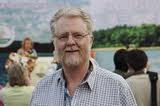
 Mark O'Connor (famous co-author of Overloading Australia) asks, should environmentalists resist Big Australia - and the densification of Melbourne? "In the long run, unless we can stop the endless growth of population and consumption, all environmental battles will be lost. Yet powerful vested interests distort our news and media to make us think growth is inevitable, and that we should live in ever more crowded cities. Mark O'Connor discusses how environmentalists can identify and defeat these forces." Look for the Sustainable Population Australia (Victorian Branch) stall there as well - all weekend and Friday.
Mark O'Connor (famous co-author of Overloading Australia) asks, should environmentalists resist Big Australia - and the densification of Melbourne? "In the long run, unless we can stop the endless growth of population and consumption, all environmental battles will be lost. Yet powerful vested interests distort our news and media to make us think growth is inevitable, and that we should live in ever more crowded cities. Mark O'Connor discusses how environmentalists can identify and defeat these forces." Look for the Sustainable Population Australia (Victorian Branch) stall there as well - all weekend and Friday.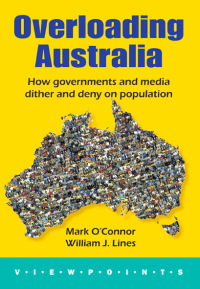
 It is logically contradictory for pro-immigrationists to argue that immigrants should be afforded all the rights that people in their adopted country enjoy, then to argue that they do not have the same right to insist on a sustainable population. Do people in a theatre forfeit the right to complain that the theatre or restaurant manager has allowed it to become too crowded, that the number of patrons has obviously exceeded safety?
It is logically contradictory for pro-immigrationists to argue that immigrants should be afforded all the rights that people in their adopted country enjoy, then to argue that they do not have the same right to insist on a sustainable population. Do people in a theatre forfeit the right to complain that the theatre or restaurant manager has allowed it to become too crowded, that the number of patrons has obviously exceeded safety?
 Living smaller can’t offset an unsustainable population that’s growing bigger.
Living smaller can’t offset an unsustainable population that’s growing bigger.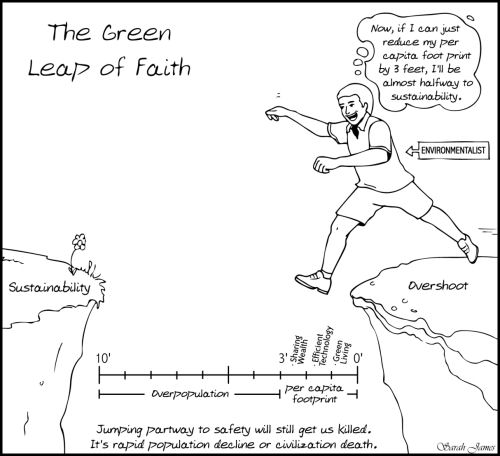
 Just 2.7% of the billions made from poker machines reaches community organizations and charities although Australia has more than 200,000 pokies — 21% of all gambling machines on the planet! The largest Australian operator of pokies is Woolworths, which owns about 13,500 machines. Here is a way that pokies might be used to make Australia more self-sufficient and bring the banks back under local control.
Just 2.7% of the billions made from poker machines reaches community organizations and charities although Australia has more than 200,000 pokies — 21% of all gambling machines on the planet! The largest Australian operator of pokies is Woolworths, which owns about 13,500 machines. Here is a way that pokies might be used to make Australia more self-sufficient and bring the banks back under local control.







 Feb. 6, 2012 - Last Wednesday, Oscar-nominated filmmaker Josh Fox
Feb. 6, 2012 - Last Wednesday, Oscar-nominated filmmaker Josh Fox  Are you a young engineer or a self-driven real-estate student? Do you want a job in international development aid? Would you know how to promote modern land-titles to aborigines in central Australia and to peasants in Bangladesh? Would you be interested in bringing modern jobs to self-sufficient villagers in Africa? Could you help plan how to modernise New Guinea village systems and promote land-sales among islanders with thousands of years old village systems? Do you want to be an international expert bringing progress and economic growth to underdeveloped places? Check these pages to see where your ambition, drive and knowledge may lead and what good you may bring to the world!
Are you a young engineer or a self-driven real-estate student? Do you want a job in international development aid? Would you know how to promote modern land-titles to aborigines in central Australia and to peasants in Bangladesh? Would you be interested in bringing modern jobs to self-sufficient villagers in Africa? Could you help plan how to modernise New Guinea village systems and promote land-sales among islanders with thousands of years old village systems? Do you want to be an international expert bringing progress and economic growth to underdeveloped places? Check these pages to see where your ambition, drive and knowledge may lead and what good you may bring to the world!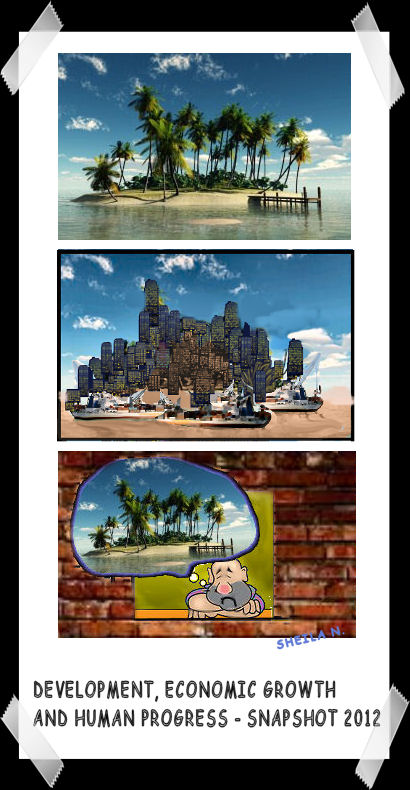
 This article identifies a tendency internationally to desensitize the public to the mass-murder by Western-supported governments of whole peoples whom they find inconvenient. Australia has a history of cultivating 'wilful blindness' to these events in our neighborhood, under the leadership of powerful government figures. Geoffrey Taylor here draws our attention to an example of such a complex attitude in an interview with Paul Keating last year. [This article started out as a response to
This article identifies a tendency internationally to desensitize the public to the mass-murder by Western-supported governments of whole peoples whom they find inconvenient. Australia has a history of cultivating 'wilful blindness' to these events in our neighborhood, under the leadership of powerful government figures. Geoffrey Taylor here draws our attention to an example of such a complex attitude in an interview with Paul Keating last year. [This article started out as a response to 
 Having spent her working life as a police officer seeing the most horrific acts of human depravity and violence and where she was hurt on duty, Terri says she could handle that ... what she can't handle is the barbaric cruelty inflicted on those that cannot fight back and has seen many animals who were beyond her care because of a sickness in society today.
Having spent her working life as a police officer seeing the most horrific acts of human depravity and violence and where she was hurt on duty, Terri says she could handle that ... what she can't handle is the barbaric cruelty inflicted on those that cannot fight back and has seen many animals who were beyond her care because of a sickness in society today.
 In her marvellously lucid book,
In her marvellously lucid book, 

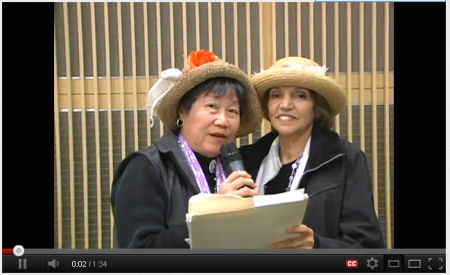
 Photo: Mature silverback citizen mentors little one.
Photo: Mature silverback citizen mentors little one.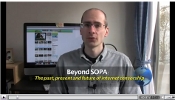 Video and transcript below: SOPA stands for "Stop Online Piracy Act". "Just as the printing press led to the widespread publication of the Bible in the vernacular and ultimately to the Reformation which forever transformed the power structure in European society, so too has the internet allowed the public to receive, correlate and distribute information that challenges official government narratives." This threatens the powerbases of our self-appointed masters and they will do anything to stop it.
Video and transcript below: SOPA stands for "Stop Online Piracy Act". "Just as the printing press led to the widespread publication of the Bible in the vernacular and ultimately to the Reformation which forever transformed the power structure in European society, so too has the internet allowed the public to receive, correlate and distribute information that challenges official government narratives." This threatens the powerbases of our self-appointed masters and they will do anything to stop it. 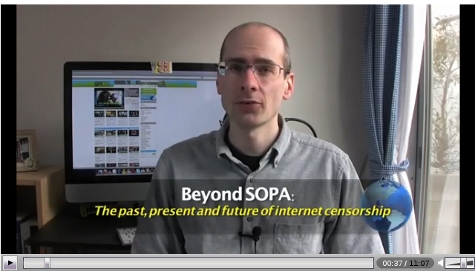
 We were successful today! In fact even more so than we expected. The injunction phase was skipped and we’re going straight to trial now. It’ll be heard in April rather than Sept/Oct. as we were planning. This has to be good for us and the forests. This article has been retitled from "Injunction to stop logging of Cobb Hill rainforest Site." The teaser then was, "If this application is successful, it will be the third time VicForests will face the courts to be sued by a community group for what is believed to be illegal logging of protected areas of public forest."
We were successful today! In fact even more so than we expected. The injunction phase was skipped and we’re going straight to trial now. It’ll be heard in April rather than Sept/Oct. as we were planning. This has to be good for us and the forests. This article has been retitled from "Injunction to stop logging of Cobb Hill rainforest Site." The teaser then was, "If this application is successful, it will be the third time VicForests will face the courts to be sued by a community group for what is believed to be illegal logging of protected areas of public forest."

 Below see video for the non-technical. This article is about a new free and open source software solution for schools that cuts down radically on power, hardware and commercial licences - therefore on cost. Userful Corporation, which calls itself "the global leader in Linux desktop virtualization", has released the next generation of it's Userful MultiSeat™ solution which it describes as turning "one Linux computer into multiple high performance independent computer stations using the HP t200 thin client. At $99 including the keyboard and mouse, the HP t200 is the worlds lowest cost thin client device."
Below see video for the non-technical. This article is about a new free and open source software solution for schools that cuts down radically on power, hardware and commercial licences - therefore on cost. Userful Corporation, which calls itself "the global leader in Linux desktop virtualization", has released the next generation of it's Userful MultiSeat™ solution which it describes as turning "one Linux computer into multiple high performance independent computer stations using the HP t200 thin client. At $99 including the keyboard and mouse, the HP t200 is the worlds lowest cost thin client device." 
 The following is a report filed by Madeline Weld, President of the Population Institute of Canada, on the Montreal book-launch by Ian Angus, co-author (with Australia's Simon Butler) of "Too Many People? Population, Immigration and the Environmental Crisis". This launch took place at 7:30 p.m. on January 2012 in the Greenhouse of Concordia University on the 12th floor. Madeline attended the previous launch at Ottawa University in December, and her account of the proceedings can be found in the SPA newsletter for February 2012. (Tim Murray) See also
The following is a report filed by Madeline Weld, President of the Population Institute of Canada, on the Montreal book-launch by Ian Angus, co-author (with Australia's Simon Butler) of "Too Many People? Population, Immigration and the Environmental Crisis". This launch took place at 7:30 p.m. on January 2012 in the Greenhouse of Concordia University on the 12th floor. Madeline attended the previous launch at Ottawa University in December, and her account of the proceedings can be found in the SPA newsletter for February 2012. (Tim Murray) See also 

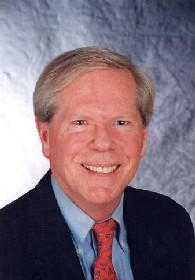
 Craig Dilworth writes "From a biological/ecological point of view, the growth of the human population can be likened to that of lemming populations prior to their periodic migrations. Such a rate of growth is unprecedented in any large animal species.....The human population is 'swarming'. We are behaving like an r-selected species.....Key to this whole process is our constantly meeting vital needs through the application of new forms of technology to both renewable and non-renewable resources, combined with the fact that there have to date always existed resources amenable to that development....If technological development were truly an aid to the survival of the human species, it would not have led to the elimination of a significant part of the population's resource base, only to have replaced by an inferior substitute. There is something wrong with the development of technology in the hands of humans...."
Craig Dilworth writes "From a biological/ecological point of view, the growth of the human population can be likened to that of lemming populations prior to their periodic migrations. Such a rate of growth is unprecedented in any large animal species.....The human population is 'swarming'. We are behaving like an r-selected species.....Key to this whole process is our constantly meeting vital needs through the application of new forms of technology to both renewable and non-renewable resources, combined with the fact that there have to date always existed resources amenable to that development....If technological development were truly an aid to the survival of the human species, it would not have led to the elimination of a significant part of the population's resource base, only to have replaced by an inferior substitute. There is something wrong with the development of technology in the hands of humans...."
 On the northern coast of N.S.W. adjoining the Gold Coast and S.E.Queensland lies Tweed Shire, christened as the Green Caldera by once Environment Minister Peter Garrett. This area is famous for one of the highest biodiversity levels in Australia and infamous for the greatest level of biodiversity loss in N.S.W. thanks to the fact that the vast majority of Tweed councillors are pro-development. But in the case of Kings Forest, a massive housing development for 15,000 people worth $2 billion, NSW State Planning took control under the massively unpopular Part 3a legislation, depriving the council of all controls.
On the northern coast of N.S.W. adjoining the Gold Coast and S.E.Queensland lies Tweed Shire, christened as the Green Caldera by once Environment Minister Peter Garrett. This area is famous for one of the highest biodiversity levels in Australia and infamous for the greatest level of biodiversity loss in N.S.W. thanks to the fact that the vast majority of Tweed councillors are pro-development. But in the case of Kings Forest, a massive housing development for 15,000 people worth $2 billion, NSW State Planning took control under the massively unpopular Part 3a legislation, depriving the council of all controls.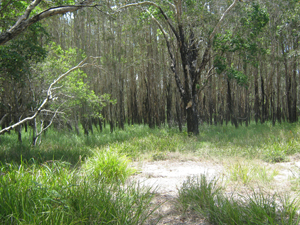 (photo: Cudgen Nature Reserve)
(photo: Cudgen Nature Reserve)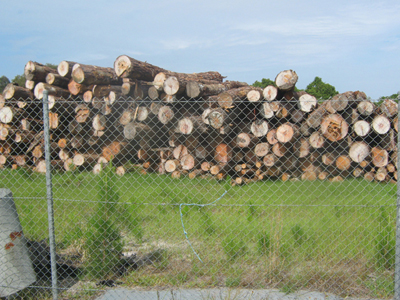
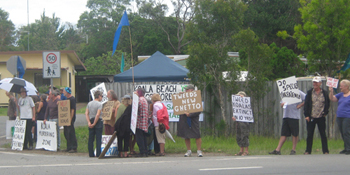

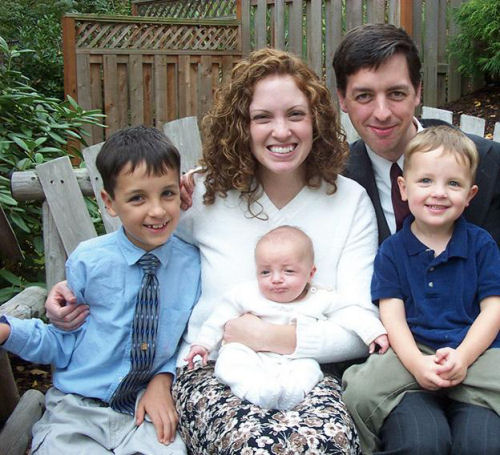
Recent comments